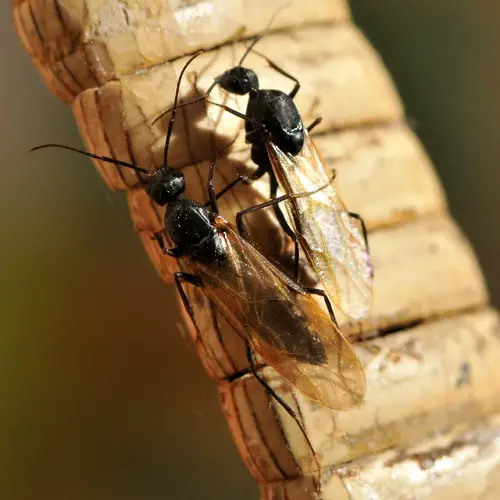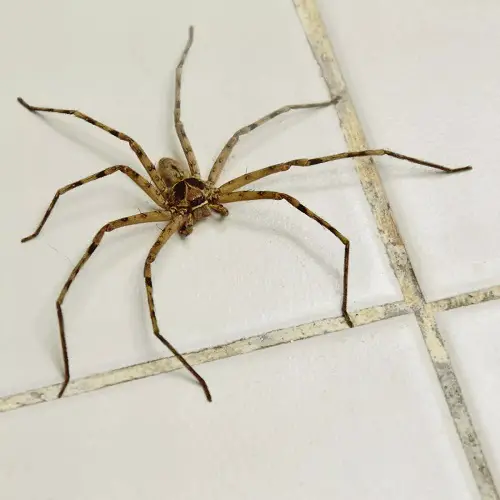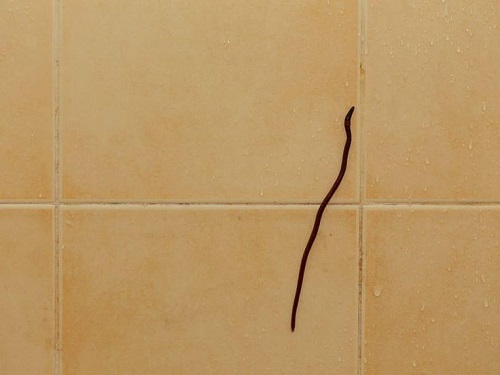Find everything about 11 Common Small Tiny Bugs in the Bathroom and How to Get Rid of Them in this informative guide.
Certainly, bathrooms can be a common place for small bugs to appear due to moisture and warmth. Here’s a list of Common Small Tiny Bugs in the Bathroom and How to Get Rid of Them with easy and effective solutions.
1. Silverfish

Scientific Name: Lepisma saccharina
Appearance: Small, silvery-gray insects with carrot-shaped bodies and long antennae.
Solution: Keep your bathroom dry and well-ventilated. Fix leaks promptly, reduce humidity levels, and use dehumidifiers if necessary. Seal cracks and crevices to prevent their entry. Use insecticides or traps if needed.
Look at the tiny bugs that resemble dirt here
2. Ants

Scientific Name: Formicidae
Appearance: Tiny, usually black or brown bugs in the bathroom that form trails to food sources.
Solution: Clean up food spills, crumbs, and sugary substances. Seal entry points around windows, doors, and pipes. Use ant baits or non-toxic remedies like vinegar and water sprays to deter them, and check out 30 ways to get rid of ants here!
3. Fruit Flies

Scientific Name: Drosophila melanogaster
Appearance: Tiny flies with a brown or tan body and red eyes.
Solution: Dispose of overripe fruits, empty trash frequently, and clean drains. Create vinegar traps using a jar with vinegar and plastic wrap with holes poked in it.
4. Cockroaches

Scientific Name: Blattodea
Appearance: Varies by species, but generally brown or black insects with flattened bodies.
Solution: Keep your bathroom clean and dry, fix water leaks, and seal cracks. Use roach baits or traps, and consider professional pest control if the infestation is severe.
5. Drain Flies

Scientific Name: Psychodidae
Appearance: Small flies with a moth-like appearance.
Solution: Clean the drains thoroughly using a mixture of baking soda and vinegar, followed by boiling water. Regularly clean sink and shower drains to prevent buildup. To learn about preventing drain flies–click here!
Discover white bugs that look like lint here
6. Booklice

Scientific Name: Psocoptera
Appearance: Tiny insects with soft bodies and pale color.
Solution: Reduce humidity levels through ventilation and dehumidifiers. Store books, paper, and other vulnerable items in dry areas. Vacuum affected areas and discard infested materials.
7. Springtails

Scientific Name: Collembola
Appearance: Minute, wingless insects that can jump when disturbed.
Solution: Address moisture issues by repairing leaks and improving ventilation. Remove damp materials and clutter. Use insecticidal soap or diatomaceous earth if needed.
8. Spiders

Scientific Name: Araneae
Appearance: Varied, usually with eight legs and two body parts.
Solution: Regularly clean and declutter your bathroom to remove hiding spots. Seal cracks and crevices where spiders may enter. Use spider repellents or sticky traps and try these plants shared in this article to deter spiders.
9. Moths

Scientific Name: Lepidoptera
Appearance: Tiny insects with wings, often found near stored food.
Solution: Store dry food items in airtight containers. Clean out the pantry regularly to prevent infestations and keep the doors and windows closed in the evening. Use pheromone traps to catch male moths.
Discover moths that are as charming as butterflies here
10. Earwigs

Scientific Name: Forficula auricularia
Appearance: Small insects with pincers on their abdomen.
Solution: Remove damp debris and vegetation near your bathroom. Seal cracks and crevices. Use insecticides or traps to manage infestations.
Remember, the key to preventing and getting rid of these bugs is maintaining a clean, dry, and well-ventilated bathroom. Regular cleaning, eliminating water sources, and sealing entry points can go a long way in keeping these pests at bay.
Discover tiny bugs that look like specks of dirt here
11. Shower Worms

Scientific Name: Clogmia albipunctata
Appearance: Shower worms, also called drain fly larvae, are small, slender creatures found in damp places like bathrooms and kitchens. They look like tiny, grayish worms with dark markings and fine hairs, making them somewhat fuzzy in appearance.
Solution: Ensure bathrooms and kitchens are dry to eliminate their preferred humid environment. Repair leaks promptly to reduce moisture. If needed, consult pest control for expert assistance.
How To Eradicate Tiny Bugs in the Bathroom
1. Identify the Bugs
Before taking any action, try to identify the specific type of bugs you’re dealing with. Knowing their type can help determine the most suitable eradication methods.
Here are the common tiny black bugs in bathrooms with no wings. Read this for further help
2. Clean Thoroughly
Start by giving your bathroom a thorough cleaning. Wipe down surfaces, including sinks, counters, and shower stalls, using mild soap or bathroom cleaner. Remove any accumulated soap scum, hair, oil, or debris, as these can provide a food source for the bugs.
3. Address Moisture
Tiny bugs are often attracted to moisture. Check for leaks in pipes, faucets, and fixtures and repair them promptly. Ensure good ventilation by using exhaust fans or opening windows to reduce humidity levels.
4. Seal Entry Points
Inspect your bathroom for any openings or gaps through which the bugs might be entering. Seal these gaps using caulk or weatherstripping to prevent further infestations.
5. Use Natural Repellents
Consider using natural repellents such as essential oils (e.g., peppermint, lavender, tea tree) to deter bugs from entering your bathroom. Mix a few drops of the chosen oil with water in a spray bottle and apply it around windowsills, door frames, and other potential entry points. You can use a diffuser as well!
6. Boric Acid or Diatomaceous Earth
Boric acid or diatomaceous earth can be effective for some types of bugs, like ants or cockroaches. Sprinkle a thin layer of these substances in areas where bugs are commonly seen. Be cautious if you have pets or children, as these substances can be harmful if ingested.
7. Use Insecticides
If the infestation is severe, you might consider using insecticides specifically designed for indoor use. Choose products labeled for use in bathrooms and follow the instructions carefully. Use caution and ensure good ventilation while applying the product.
Check out the DIY insecticidal soap recipes for killing pests here
8. Regular Maintenance
After eradicating the bugs, maintain a regular cleaning and maintenance routine in your bathroom. Keep surfaces dry, fix any leaks promptly, and regularly inspect for signs of new infestations.
9. Professional Help
If the infestation persists despite your efforts, or if you’re unsure about the type of bugs you’re dealing with, it’s wise to consult a pest control professional. They can accurately identify the pests and provide targeted treatments.
10. Drain Cleaning
For drain flies, use a drain cleaner to eliminate any organic matter and debris in the drains where they breed. Follow the instructions on the product.
11. Use Traps
Place bug traps or sticky paper near common entry points or infestation sites. These traps can help reduce their population.
Explore DIY mosquito traps for home and garden here
12. Inspect Plants
If you have houseplants in the bathroom, check the soil for signs of infestation, as some bugs may breed there.
13. Reduce Humidity
Use exhaust fans or open windows to reduce humidity in the bathroom, as many bugs thrive in damp conditions.
14. Remove Standing Water
Check for any containers or items in the bathroom that may collect water, such as wet bathmats or leaky toiletries, and remove them.
Check tiny white bugs on plants that look like dust here
Conclusion
Dealing with these common small bathroom bugs is straightforward. First, identify the pests, clean thoroughly, address moisture problems, seal entry points, and consider using natural repellents or traps if necessary. Regular maintenance and professional help, if needed, will keep your bathroom bug-free.


